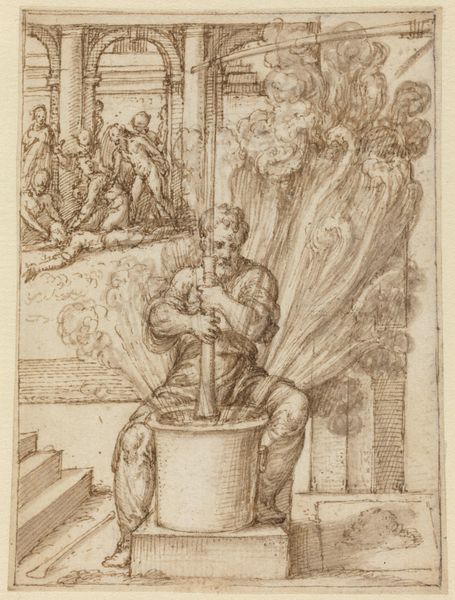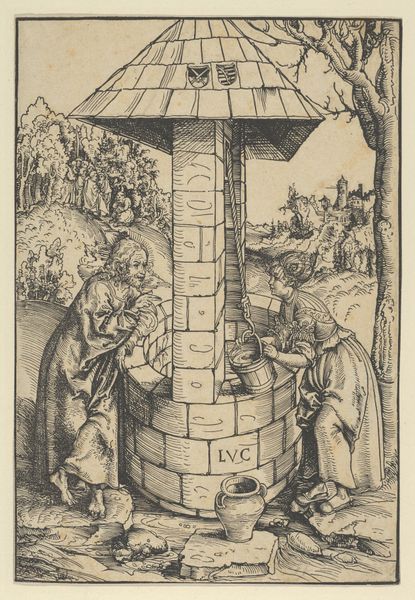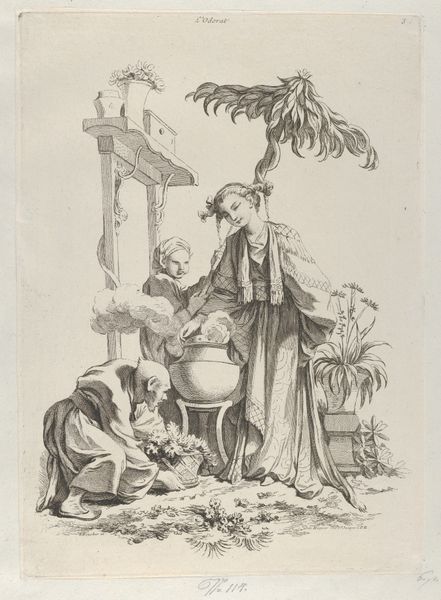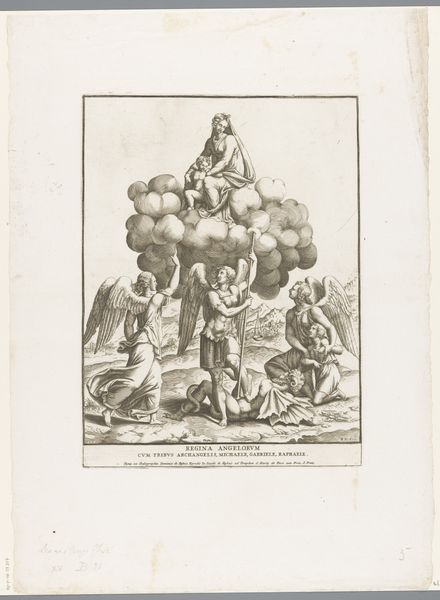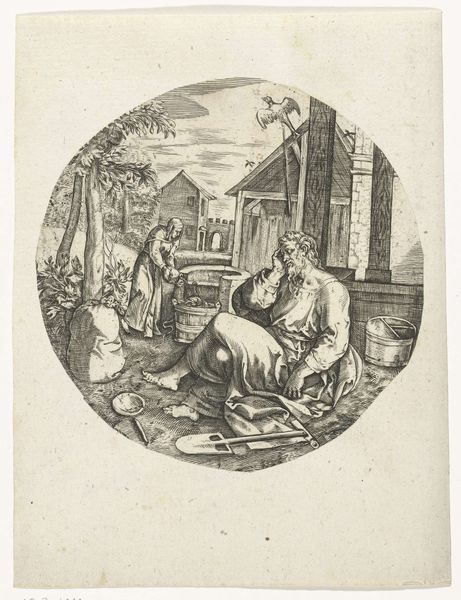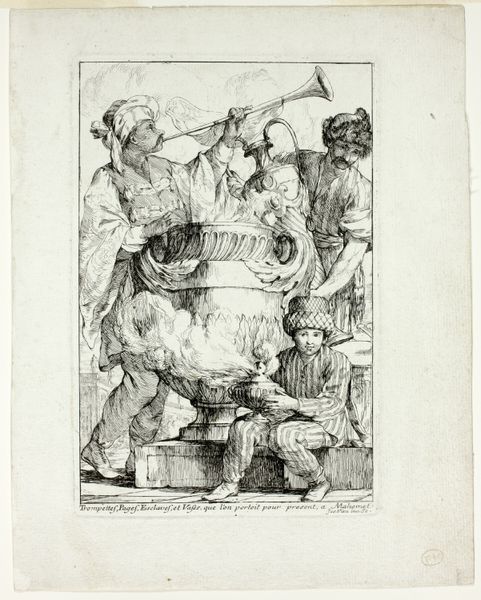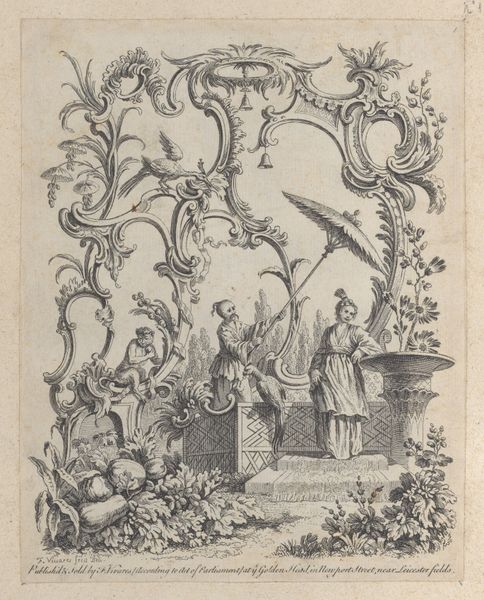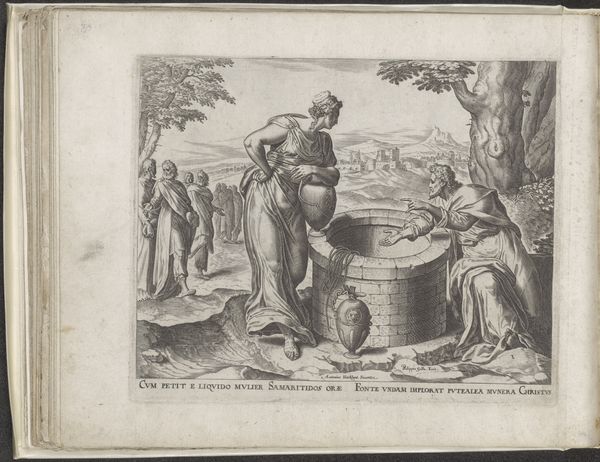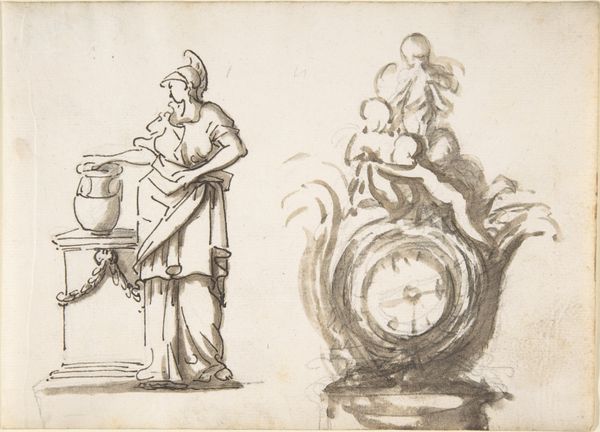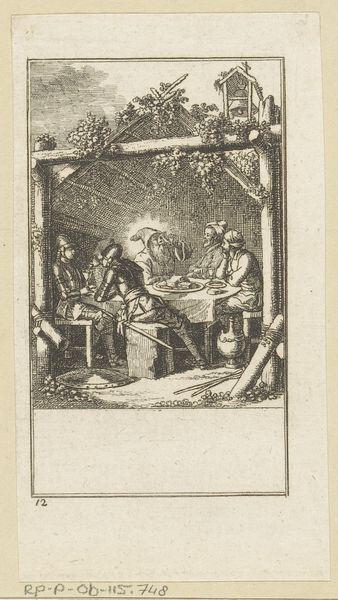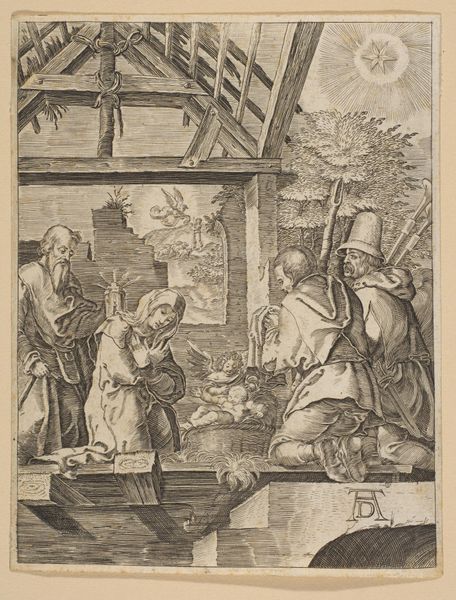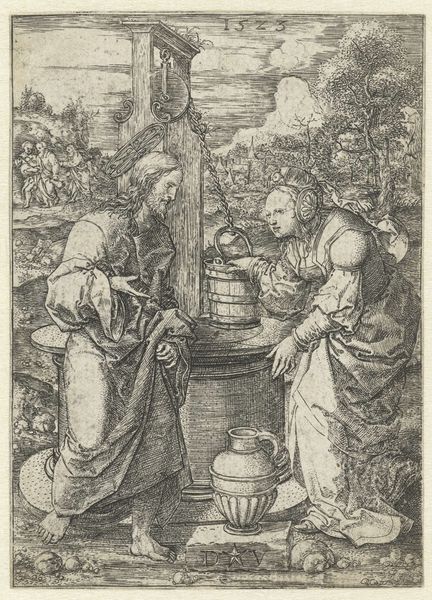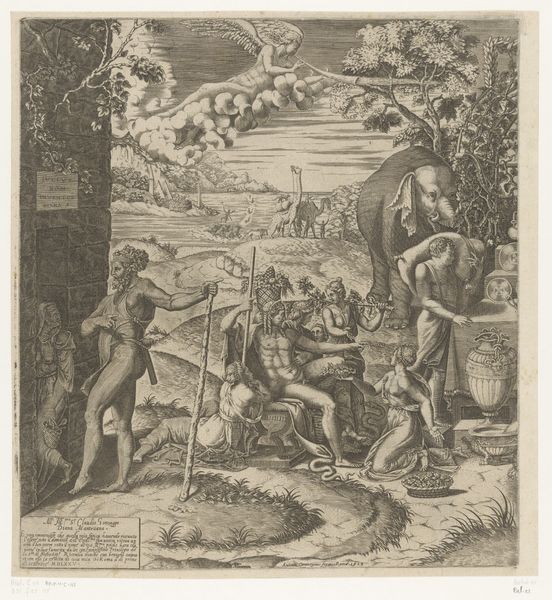
Two Children, One Playing the Drum 1700 - 1770
0:00
0:00
drawing, print, etching
#
drawing
#
baroque
# print
#
etching
#
figuration
#
genre-painting
Dimensions: sheet: 11 7/16 x 8 3/8 in. (29 x 21.2 cm) plate: 8 1/16 x 6 1/8 in. (20.5 x 15.6 cm)
Copyright: Public Domain
Curator: This etching, entitled "Two Children, One Playing the Drum," dates to sometime between 1700 and 1770. It’s a captivating example of baroque genre painting now held at the Metropolitan Museum of Art. Editor: My first impression is one of controlled chaos. The linework, although delicate, conveys a bustling, almost frenetic energy. There's a sense of unrefined playfulness juxtaposed with the formality of the setting, whatever kind of place it might be... Curator: What intrigues me is the use of readily available materials. Etching allowed for relatively quick reproduction and dissemination of imagery. These prints often circulated among workshops, influencing designs for decorative objects and influencing ideas about leisure and social structures. Editor: Indeed. And it prompts a deeper exploration of childhood in the 18th century. How were children perceived and what societal expectations were imposed upon them? The artwork provides us insight into domestic environments and possibly critiques the upper class displaying children within artificial tableaus... Curator: Look at how the etching technique renders details. The varying line weights create a sense of depth. See how the objects become tangible as almost commercial products through careful depiction of their forms? The urns in the background or the drums almost rendered to suggest that they can be exchanged for resources? Editor: Considering its original owner was Louis Antoine Crozat, Baron de Thiers, Paris. He had a taste for luxury. It encourages one to wonder what implications there might be on identity. Is the one with the drum practicing dominance and violence. Does that signal something related to the upper classes, class awareness and gender? It hints at themes of access to resources and the formation of one's understanding of authority early in life. Curator: Exactly. By observing materials and technical application, one recognizes their social functions, which becomes critical in unveiling those assumptions... It transforms into an insightful document when we begin to dissect not only how objects and labor intersect with aesthetic sensibilities but also how consumption plays a significant role... Editor: And in deconstructing such representations we address societal progress and ongoing dialogues within marginalized contexts and how people, like these two children are impacted…Thank you for allowing us to think deeper through this etching together. Curator: The pleasure was mine; I'm happy we explored its intricate dimensions together.
Comments
No comments
Be the first to comment and join the conversation on the ultimate creative platform.
